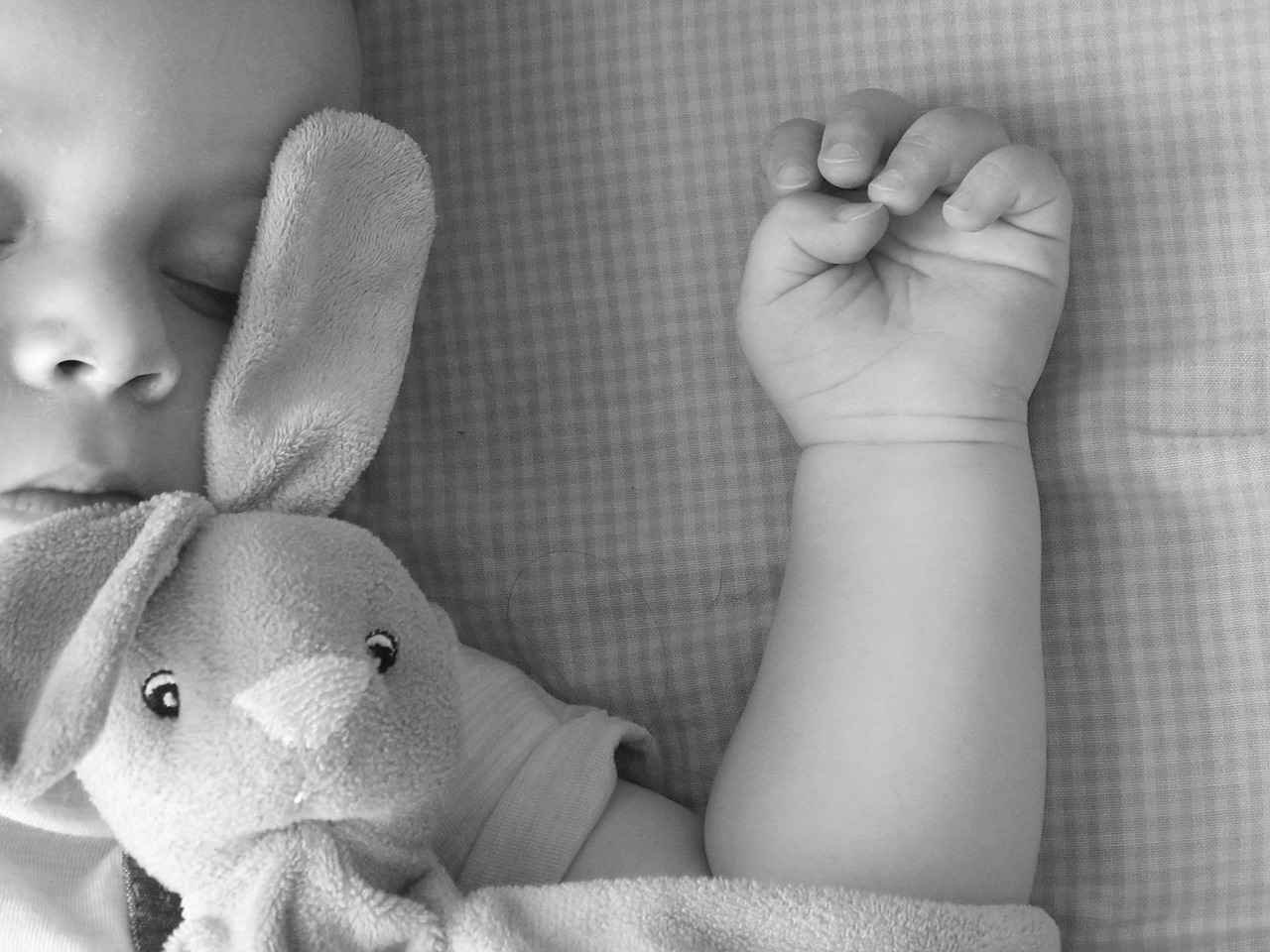This article explores how the popular children’s show Paw Patrol can be utilized as an educational tool to teach young children essential lessons about safety and community engagement.
Paw Patrol is a beloved children’s series that features a team of animated puppies, each with their own unique skills, working together to protect their community. The show’s premise revolves around teamwork, problem-solving, and the importance of helping others, making it not only entertaining but also an excellent resource for teaching valuable lessons. By engaging with the show’s themes, parents can effectively introduce their children to critical concepts of safety and community involvement.
Understanding the Paw Patrol Concept
The charm of Paw Patrol lies in its vibrant characters and adventurous plots. Each episode showcases the heroic efforts of the pups, led by a boy named Ryder, as they tackle various challenges in Adventure Bay. This engaging format captivates children’s attention, making it easier for parents to discuss important topics like safety and cooperation. The relatable scenarios presented in the show allow children to see the real-world application of these lessons.
The Importance of Teaching Safety to Kids
Teaching safety is essential for children’s development. Early education on safety empowers kids to make informed decisions and recognize potential hazards. By introducing safety concepts through familiar characters like those in Paw Patrol, children can learn in a fun and engaging way. This method not only reinforces the message but also encourages children to remember it when faced with real-life situations.
Key Safety Lessons from Paw Patrol
- Fire Safety with Marshall: Marshall, the fire pup, teaches children about fire safety protocols, such as stop, drop, and roll. Parents can discuss these strategies and even practice them at home.
- Water Safety with Zuma: Zuma emphasizes the importance of water safety, particularly around pools and lakes. Parents can use Zuma’s adventures to talk about swimming rules and the buddy system.
Community Engagement through Paw Patrol
Paw Patrol also promotes community values, highlighting the importance of teamwork and helping others. The show encourages children to think about how they can contribute positively to their own communities. By discussing the pups’ actions, parents can inspire kids to engage in acts of kindness and community service.
Encouraging Problem-Solving Skills
The narrative of Paw Patrol often involves problem-solving scenarios where the pups must work together to find solutions. Parents can use these situations to enhance their children’s critical thinking skills. For instance, after watching an episode, parents can ask their children how they would solve a similar problem, fostering discussion and creativity.
Role-Playing Paw Patrol Scenarios
Role-playing is an effective learning method that allows children to embody the characters they admire. Parents can create simple scenarios at home where children can act out Paw Patrol missions, reinforcing lessons about safety and teamwork in an interactive way.
Creating a Community Safety Plan
Inspired by Paw Patrol, parents can collaborate with their children to develop a community safety plan. This plan can include strategies for emergencies, identifying safe places in the neighborhood, and ways to help others in need. Involving children in this process not only teaches them about safety but also empowers them to take responsibility.
Incorporating Paw Patrol into Daily Routines
Integrating Paw Patrol lessons into daily life can reinforce learning. Parents can use everyday situations to discuss safety and community values, such as practicing road safety while walking or discussing how to assist neighbors.
Using Paw Patrol Merchandise for Learning
Toys, books, and games based on Paw Patrol can serve as educational tools. Parents can use these resources to create engaging learning experiences that align with the show’s themes, fostering a deeper understanding of safety and community values.
Engaging with Local Community Programs
Many communities offer programs that reflect the values of Paw Patrol. Parents can help their children find and participate in local initiatives that promote safety, such as neighborhood watch groups or community clean-up days, encouraging active involvement in their surroundings.

Understanding the Paw Patrol Concept
Paw Patrol is a beloved animated series that captures the hearts of children around the globe. The show features a dynamic team of puppies, each with unique skills and personalities, who band together to protect their community, Adventure Bay. This engaging premise not only entertains but also imparts valuable lessons about teamwork, responsibility, and community service.
The central character, Ryder, a young boy, leads the team of pups on various missions that require problem-solving and cooperation. Each episode presents a new challenge, ranging from rescuing a kitten stuck in a tree to helping a farmer save his crops. The format of the show encourages children to think critically about how to solve problems effectively, making it both fun and educational.
One of the reasons Paw Patrol resonates so well with children is its colorful animation and relatable characters. The puppies, including Chase, the police pup, Marshall, the firefighter, and Zuma, the water rescue dog, embody traits that children admire, such as bravery, loyalty, and kindness. This connection fosters a sense of identification, making the lessons taught within the show more impactful.
Moreover, the series emphasizes the importance of community. Each episode showcases how the pups work together to help their neighbors, reinforcing the idea that everyone has a role in making their community a better place. This theme encourages children to think about their own responsibilities within their families and neighborhoods.
In addition to teamwork and community service, Paw Patrol introduces various safety concepts in a relatable manner. For instance, when Marshall teaches about fire safety, children learn the importance of staying calm and following safety procedures. This approach not only entertains but also educates, making children more aware of their surroundings and the importance of safety in everyday life.
The show’s popularity has led to a wide range of merchandise, including toys, books, and games that further extend its educational reach. Parents can utilize these resources to reinforce the lessons learned in each episode. By engaging with their children through these materials, parents can facilitate discussions about safety, teamwork, and community values, making learning a shared experience.
Overall, Paw Patrol serves as an excellent educational tool. It combines entertainment with essential life lessons, making it a valuable resource for parents looking to teach their children about safety and community engagement. The show’s engaging characters and relatable scenarios provide a foundation for meaningful conversations between parents and children, ensuring that the lessons learned are both memorable and impactful.

The Importance of Teaching Safety to Kids
Teaching safety to children is crucial for their overall development and well-being. Early education on safety equips kids with the knowledge and skills necessary to make informed decisions in potentially hazardous situations. Understanding safety concepts at a young age can significantly reduce the risk of accidents and empower children to act responsibly.
One of the primary reasons to teach safety to children is that it helps them develop a sense of awareness about their surroundings. Children who are educated about various safety measures—such as traffic rules, fire safety, and emergency protocols—learn to recognize dangers and react appropriately. This awareness is not just about avoiding risks; it also fosters a sense of confidence in their ability to handle challenging situations.
Additionally, teaching safety promotes the development of critical thinking skills. When children engage in discussions about safety scenarios, they learn to assess risks and make decisions based on available information. For instance, role-playing different emergency situations can help them practice assessing the best course of action. This interactive learning approach encourages children to think critically and enhances their problem-solving abilities.
Moreover, early safety education can instill a sense of responsibility in children. When kids understand the importance of following safety rules, they are more likely to take ownership of their actions. This sense of responsibility extends beyond personal safety; it can also influence how they interact with peers and community members. Children who learn about safety are often more inclined to look out for others, fostering a culture of care and support.
Another vital aspect of teaching safety is its role in community engagement. When children are aware of safety protocols, they can participate more actively in community initiatives. For example, they can engage in local safety programs or volunteer for community service that focuses on improving safety standards. This involvement not only reinforces their understanding of safety but also encourages them to be active, responsible community members.
To effectively teach safety, parents and educators can utilize various resources, including books, videos, and interactive games. For instance, shows like Paw Patrol can be an excellent tool for imparting safety lessons in a fun and engaging manner. By discussing episodes that highlight safety themes, parents can open dialogues about real-life safety practices. This approach ensures that children not only enjoy the content but also internalize the lessons being presented.
In conclusion, teaching safety to children is a fundamental aspect of their growth and development. It empowers them with the skills and knowledge necessary to navigate their environments safely. By fostering awareness, critical thinking, and a sense of responsibility, we prepare children to become informed and engaged members of their communities. The lessons learned in childhood can have lasting impacts, shaping how they approach safety throughout their lives.
Key Safety Lessons from Paw Patrol
Paw Patrol is more than just an entertaining children’s show; it serves as a valuable resource for teaching young viewers essential safety lessons. Each episode presents various scenarios that not only engage children but also impart crucial messages about safety and community responsibility. In this section, we will explore specific episodes that effectively convey these important lessons.
- Fire Safety with Marshall: One of the standout characters in Paw Patrol is Marshall, the fire pup. In episodes featuring Marshall, children learn about the importance of fire safety. For instance, in the episode titled “Pups Save a Hoot,” Marshall demonstrates how to react in case of a fire, emphasizing the need to stay calm, call for help, and never hide. Parents can use these lessons to discuss fire drills, the importance of smoke detectors, and having an escape plan.
- Water Safety with Zuma: Another vital lesson is taught through Zuma, the water-loving pup. In “Pups Save a Mer-Pup,” Zuma highlights the significance of water safety, including wearing life jackets and never swimming alone. This episode serves as an excellent springboard for parents to talk about safe swimming practices, the dangers of water currents, and the importance of adult supervision during water activities.
- Stranger Safety with Ryder: Ryder, the leader of the Paw Patrol, often addresses issues related to stranger danger. In the episode “Pups Save the Train,” Ryder teaches kids how to identify safe adults and the importance of staying close to trusted caregivers. This lesson can help parents instill awareness in their children about whom to approach for help and how to react in unfamiliar situations.
- Emergency Preparedness with the Team: Episodes like “Pups Save the Penguins” emphasize the importance of being prepared for emergencies. The Paw Patrol team showcases how to work together to solve problems and assist those in need. This narrative encourages children to think about what to do in emergencies, fostering a sense of responsibility and teamwork.
- Road Safety with Chase: Chase, the police pup, teaches kids about road safety in episodes such as “Pups Save the Mayor.” He emphasizes looking both ways before crossing the street, understanding traffic signals, and the importance of pedestrian safety. Parents can build on these lessons by discussing safe walking routes and the significance of using crosswalks.
By incorporating these safety lessons from Paw Patrol into everyday discussions, parents can help reinforce the concepts presented in the show. Engaging children in conversations about these episodes not only enhances their understanding of safety but also encourages them to apply what they’ve learned in real-life situations. The show’s ability to blend fun with education makes it a powerful tool for teaching kids about safety and community engagement.
Fire Safety with Marshall
is a crucial aspect of teaching children about fire protocols in an engaging and memorable way. Marshall, the lovable fire pup from Paw Patrol, serves as an excellent role model for kids, making the concept of fire safety both fun and educational. This section outlines effective strategies for parents to discuss fire safety with their children, using Marshall’s adventures as a foundation.
One of the first lessons parents can share is the importance of stop, drop, and roll. This simple technique is vital for children to remember in case of a fire. Parents can create a fun game where kids practice this method, mimicking Marshall’s actions when he responds to a fire emergency. By turning this practice into a playful activity, children are more likely to remember the steps when it truly matters.
Additionally, parents should emphasize the significance of having a fire escape plan. Marshall often demonstrates how to safely exit a building during emergencies. Parents can involve their children in creating a fire escape route for their home. This can be done by drawing a map together, marking exits, and identifying a safe meeting place outside. Engaging in this activity not only educates kids about safety but also empowers them to take an active role in their own safety.
Another critical lesson from Marshall’s adventures is the importance of not playing with fire. Parents can use episodes where Marshall teaches his friends about fire hazards to discuss why matches, lighters, and other fire-starting tools should only be handled by adults. This conversation can be reinforced by showing children safe alternatives for lighting candles or starting a barbecue, always under adult supervision.
Moreover, parents can discuss the role of firefighters in the community, inspired by Marshall’s character. Explaining what firefighters do and how they help keep everyone safe can foster a sense of respect and admiration for these heroes. Organizing a visit to a local fire station can further enhance this understanding, allowing children to meet real firefighters and learn about their equipment and responsibilities firsthand.
To reinforce these lessons, parents can create a fire safety checklist that children can follow. This checklist can include tasks like checking smoke detectors, identifying fire hazards at home, and practicing their escape routes. By involving children in these activities, they are more likely to internalize the importance of fire safety.
Incorporating stories and discussions about fire safety into daily routines can also be beneficial. Parents can read books or watch episodes of Paw Patrol that feature Marshall and his fire safety lessons. Afterward, discussing what they learned can help solidify these concepts in children’s minds. Parents can ask questions like, “What should you do if you see smoke?” or “Why is it important to have a fire escape plan?” This encourages critical thinking and reinforces the lessons they’ve learned.
Lastly, parents should remind children that if they ever find themselves in a fire situation, they should call 911 or alert an adult immediately. This reinforces the idea that they are not alone and that help is always available. Through these discussions and activities inspired by Marshall, parents can effectively teach their children essential fire safety protocols in a way that is engaging and memorable.
Water Safety with Zuma
Zuma, the lovable water pup from Paw Patrol, plays a crucial role in teaching children about the significance of water safety. As parents, it is essential to leverage Zuma’s adventures to instill important lessons regarding swimming and the potential risks associated with water activities.
Understanding water safety begins with recognizing the dangers that can arise in aquatic environments. Parents can utilize Zuma’s character to discuss various scenarios where safety measures are necessary. For instance, engaging children in conversations about the importance of wearing life jackets when boating or how to behave around pools can make these lessons relatable and memorable.
One effective way to educate children is through storytelling. Parents can recount episodes from Paw Patrol where Zuma takes action to ensure safety at the beach or during a water rescue mission. These narratives not only captivate children’s attention but also provide a platform for discussing real-life safety practices.
- Always Supervise: Emphasize that children should never swim alone and that adult supervision is crucial.
- Learn to Swim: Encourage kids to take swimming lessons to build confidence and skills in the water.
- Recognize Signs: Teach children to identify warning signs, such as strong currents or unsafe conditions.
- Emergency Preparedness: Discuss what to do in case of an emergency, including signaling for help.
Another engaging method is to create fun activities inspired by Zuma’s adventures. For example, parents can organize a water safety day at home or in the community, where children can participate in games that teach safety rules. Activities like relay races that incorporate safety gear or quizzes about water safety can reinforce the lessons while keeping the experience enjoyable.
Additionally, parents can utilize visual aids such as books or videos that feature Zuma and his friends. These resources can further illustrate the importance of water safety in a way that resonates with young viewers. Discussing the content after watching or reading can help solidify the lessons learned.
Moreover, it’s vital for parents to lead by example. Demonstrating safe behaviors around water, such as wearing appropriate safety gear and adhering to rules, sets a powerful precedent for children. When kids see their parents practicing water safety, they are more likely to adopt these behaviors themselves.
Incorporating water safety discussions into everyday conversations can also be beneficial. For instance, while preparing for a family trip to the pool or beach, parents can review safety rules together. This practice not only reinforces the lessons but also helps children feel more prepared and confident in water settings.
Finally, connecting with local swimming programs or community events that focus on water safety can provide additional learning opportunities. Many organizations offer workshops or classes that emphasize safe practices while engaging children in fun and interactive ways.
In conclusion, utilizing Zuma’s character from Paw Patrol as a teaching tool for water safety is an effective strategy for parents. By incorporating storytelling, activities, visual aids, and real-life examples, families can foster a strong understanding of water safety in children. This proactive approach not only equips kids with essential skills but also helps them enjoy their time in the water safely.
Community Engagement through Paw Patrol
Paw Patrol is more than just an entertaining children’s show; it serves as a valuable educational tool that imparts essential lessons about safety and community values. The animated series features a group of heroic puppies who work together to protect their community, teaching young viewers the importance of teamwork, empathy, and helping others. This section delves deeper into how Paw Patrol encourages community engagement and fosters a sense of responsibility among children.
One of the primary themes of Paw Patrol is teamwork. Each episode showcases the unique skills of the individual pups, emphasizing that everyone has something valuable to contribute. For instance, when a crisis arises, the pups come together, combining their strengths to solve problems effectively. This collaborative spirit not only entertains but also teaches children the importance of working together towards a common goal. Parents can use these examples to discuss how teamwork is essential in real-life situations, such as group projects in school or community events.
Moreover, the show highlights the significance of helping others. The pups often respond to community needs, whether it’s rescuing a stranded kitten or assisting a friend in trouble. These scenarios instill a sense of empathy in young viewers, encouraging them to think about how they can help those around them. Parents can reinforce this message by encouraging their children to participate in community service or assist neighbors, fostering a culture of kindness and support.
Another critical aspect of community engagement depicted in Paw Patrol is the idea of responsibility. Each pup has a specific role and set of duties, teaching children that being part of a community comes with obligations. This can be a great opportunity for parents to discuss the importance of being responsible citizens, whether it’s taking care of pets, helping with household chores, or being mindful of the environment. By relating these lessons to the pups’ adventures, children can better understand their role within their own communities.
In addition to teamwork and responsibility, Paw Patrol also promotes problem-solving skills. The challenges faced by the pups often require creative solutions, encouraging children to think critically and devise their own strategies. Parents can enhance this learning by engaging their children in discussions about how they would approach similar problems in their lives. This not only reinforces the lessons learned from the show but also empowers children to become proactive in their own communities.
Furthermore, the show encourages communication among its characters, which is vital for effective teamwork. The pups are often seen discussing their plans and listening to each other’s ideas. This aspect can be highlighted by parents as a model for healthy communication, teaching children how to express their thoughts and listen to others. By fostering open dialogues at home, parents can create an environment where children feel comfortable sharing their ideas and concerns.
Lastly, Paw Patrol serves as a springboard for discussions about local community resources and initiatives. Parents can take advantage of the show’s themes to introduce their children to local volunteer opportunities or community events. This not only reinforces the values learned from the show but also helps children understand the real-world impact of their actions. By participating in community activities, children can experience firsthand the joy of helping others and being part of something larger than themselves.
In summary, Paw Patrol is an excellent resource for teaching children about community engagement and values. Through its entertaining narratives, the show instills essential lessons about teamwork, empathy, responsibility, problem-solving, and communication. By leveraging these themes, parents can enhance their children’s understanding of their roles within their communities, ultimately fostering a generation of caring and proactive individuals.

Encouraging Problem-Solving Skills
Encouraging children to develop problem-solving skills is essential for their cognitive growth and overall development. The animated series Paw Patrol provides an engaging platform for parents to introduce these skills to their children. Through various episodes, the show’s narrative often presents problem-solving scenarios, allowing children to witness how the characters tackle challenges and come up with solutions.
By analyzing these situations, parents can create similar scenarios at home, fostering an environment where children feel encouraged to think critically and creatively. Here are some effective strategies:
- Discussing the Episodes: After watching an episode, engage your child in a conversation about the challenges faced by the Paw Patrol pups. Ask questions like, “What would you have done in that situation?” or “How did they solve the problem?” This encourages children to articulate their thoughts and reasoning.
- Role-Playing Scenarios: Role-playing is an excellent way to reinforce learning. Set up a play area where your child can act out different Paw Patrol scenarios. For example, they could pretend to be Marshall, helping to put out a fire, or Zuma, rescuing someone from the water. This hands-on approach allows children to experiment with problem-solving in a safe space.
- Creating Your Own Adventures: Encourage your child to come up with their own Paw Patrol missions. This could involve creating a story where they need to solve a problem. By guiding them through the process of identifying the problem, brainstorming solutions, and deciding on a course of action, you help enhance their critical thinking skills.
- Using Everyday Situations: Incorporate problem-solving discussions into daily life. For instance, if you encounter a minor household issue, involve your child in the discussion. Ask them how they would approach the problem and what solutions they can think of. This real-world application helps solidify their skills.
Furthermore, parents can enhance learning by collaborating with their children to create a community safety plan inspired by the lessons learned from Paw Patrol. This not only reinforces their understanding of safety protocols but also teaches them about the importance of community engagement.
Steps to Create a Community Safety Plan:1. Identify potential safety issues in your neighborhood.2. Discuss how Paw Patrol characters would address these issues.3. Collaborate with your child to create a plan that includes steps to take in various situations.4. Practice the plan together, ensuring your child feels confident in their ability to respond.
By integrating these strategies into your child’s routine, you can effectively use Paw Patrol as a tool to enhance their problem-solving skills. This not only promotes critical thinking but also encourages them to be proactive and responsible members of their community. As they learn to navigate challenges, they will develop the confidence needed to approach future problems with a positive and solution-oriented mindset.
Role-Playing Paw Patrol Scenarios
Role-playing is a dynamic and interactive method that enhances learning, especially for young children. By engaging in role-playing activities inspired by the beloved show Paw Patrol, kids can not only have fun but also internalize important lessons about safety and teamwork. This section will explore various ways to recreate Paw Patrol scenarios at home, making learning both enjoyable and impactful.
To start, parents can set up a Paw Patrol-themed play area in their living room or backyard. This can include simple props like cardboard boxes painted as a fire truck or a police car. Children can take turns being different characters, such as Chase, the police pup, or Marshall, the fire pup. This not only allows them to act out their favorite scenes but also teaches them about the roles each character plays in their community.
One effective way to reinforce safety lessons is by creating scenarios based on real-life situations. For example, parents can simulate a fire rescue where the child must help Marshall save a stuffed animal from a ‘fire.’ This can be accompanied by discussions about what to do in case of a fire, emphasizing the importance of staying calm and following safety protocols.
Another engaging activity involves teamwork challenges. Parents can create obstacle courses that mimic the challenges faced by the Paw Patrol team. Children can work together to complete the course, learning to communicate and collaborate effectively. This not only reinforces the idea of teamwork but also helps them understand that everyone has a unique role to play in achieving a common goal.
Additionally, incorporating problem-solving tasks can be beneficial. For instance, parents can present a scenario where the Paw Patrol needs to find a lost item. Children can brainstorm solutions and come up with a plan to ‘rescue’ the item, encouraging critical thinking and creativity. This method not only reinforces the lessons from the show but also empowers children to think independently.
To deepen the learning experience, parents can introduce storytelling elements. After role-playing, children can recount their adventures, discussing what they learned about safety and teamwork. This reflection helps solidify their understanding and allows them to express their thoughts and feelings about the scenarios they acted out.
In summary, role-playing Paw Patrol scenarios at home offers a multifaceted approach to teaching kids about safety and teamwork. By creating interactive and engaging activities, parents can help their children internalize these vital lessons while having fun. This hands-on learning experience not only fosters creativity and critical thinking but also strengthens the parent-child bond through shared adventures.
Creating a Community Safety Plan
Developing a community safety plan with your children can be an engaging and educational experience. Inspired by the teamwork and problem-solving skills demonstrated by the characters in Paw Patrol, this collaborative effort can help children understand the importance of safety while fostering a sense of responsibility within the community. Below are steps to create a practical community safety plan together.
- Discuss Community Safety Needs: Begin by talking with your child about what safety means. Ask them about their experiences in the community. Are there any areas where they feel unsafe? What do they think could be improved? This conversation sets the groundwork for identifying specific safety needs.
- Identify Local Resources: Work together to research local resources that can help enhance community safety. This might include local police departments, fire stations, and community centers. Understanding who to contact in case of emergencies is crucial.
- Set Safety Goals: Based on your discussions, create a list of safety goals. These could include improving neighborhood watch programs, organizing community clean-up days, or creating a buddy system for children walking to school. Make sure these goals are achievable and relevant to your community.
- Create a Safety Map: Using a large piece of paper or poster board, draw a map of your neighborhood. Mark important locations such as parks, schools, and emergency services. Discuss safe routes for walking or biking and highlight areas that may require caution.
- Develop Safety Procedures: Together, outline procedures for various scenarios. For example, what should children do if they get lost? How can they identify safe adults to approach? Encourage your child to think critically about these situations, just like the pups do in Paw Patrol.
- Practice Role-Playing: To reinforce the safety procedures, engage in role-playing activities. This could involve pretending to be in a situation where they need to apply what they’ve learned. Role-playing helps children feel more confident and prepared for real-life scenarios.
- Involve the Community: Once your plan is in place, consider sharing it with neighbors or community groups. This could lead to further collaboration on community safety initiatives and allow your child to see the impact of their efforts.
- Review and Update: A community safety plan is a living document. Schedule regular check-ins to review the plan and update it as necessary. Encourage your child to take ownership of this process, fostering a sense of pride in their contributions.
By following these steps, parents and children can create a comprehensive community safety plan that not only educates but also empowers young minds. Through collaboration, children learn the value of teamwork, responsibility, and the importance of being proactive in their communities, just like the heroic pups of Paw Patrol.

Incorporating Paw Patrol into Daily Routines
Integrating the valuable lessons from Paw Patrol into daily life can significantly reinforce children’s understanding of safety and community. By utilizing the show’s engaging characters and scenarios, parents can create enriching experiences that extend beyond screen time. Here are some practical tips for parents to seamlessly weave these lessons into everyday activities.
- Morning Routines with a Purpose: Start each day by discussing a specific Paw Patrol episode that emphasizes safety. For instance, if the episode features fire safety, remind your child to practice safe behaviors when using appliances or crossing the street.
- Incorporate Role-Playing: Use role-playing to reenact scenarios from the show. Create a mini Paw Patrol mission at home where your child can act as their favorite pup, solving problems and helping others. This not only makes learning fun but also helps them internalize important lessons.
- Use Paw Patrol Merchandise: Toys, books, and games based on Paw Patrol can serve as excellent educational tools. Encourage your child to read books that include safety lessons or play games that require teamwork, mirroring the show’s themes.
- Discuss Community Helpers: Use the show as a springboard to talk about real-life community helpers. Discuss the roles of firefighters, police officers, and paramedics, and why their work is important. This helps children understand the value of community and teamwork.
- Engage in Local Activities: Look for local community programs that align with the values taught in Paw Patrol, such as safety workshops or volunteer opportunities. Participating in these activities can reinforce the lessons learned from the show while fostering a sense of belonging.
- Safety Checklists: Create a safety checklist inspired by the Paw Patrol team. Make it a fun activity where your child can help you identify safety measures at home or during outings, reinforcing their understanding of safe practices.
By incorporating these practical tips into daily routines, parents can effectively leverage the engaging content of Paw Patrol to instill essential lessons about safety and community. This approach not only makes learning enjoyable but also empowers children to apply what they learn in real-life situations.
Furthermore, parents can encourage discussions about the episodes after viewing them. Ask questions like, “What did Marshall teach us about fire safety?” or “How did the Paw Patrol team help their friends today?” This interactive dialogue helps children articulate their understanding and reinforces the lessons learned.
In essence, the key to successfully incorporating Paw Patrol into daily life lies in creativity and consistency. By turning lessons into fun activities and discussions, parents can ensure that their children not only enjoy the show but also gain valuable insights that will help them navigate their world safely and responsibly.
Using Paw Patrol Merchandise for Learning
Toys and books based on Paw Patrol can serve as excellent educational tools, providing parents with unique opportunities to teach their children about safety and community values. By integrating these resources into daily activities, parents can create engaging learning experiences that resonate with young minds.
One of the primary advantages of using Paw Patrol merchandise is that it captures children’s attention through colorful characters and exciting adventures. Children are naturally drawn to the show’s lovable puppies, making it easier for parents to introduce important lessons in a fun and relatable way.
- Interactive Learning: Toys such as action figures and playsets encourage role-playing, allowing children to reenact scenes from the show. This type of interactive play promotes critical thinking and problem-solving skills as kids navigate various scenarios.
- Reading and Comprehension: Paw Patrol books are another valuable resource. Reading these stories together not only enhances literacy skills but also sparks conversations about the moral lessons embedded in each tale. For example, discussions can revolve around teamwork, bravery, and helping others.
- Safety Awareness: Specific toys, like fire trucks or police vehicles, can be used to teach children about safety protocols. Parents can explain the roles of different community helpers while children play, reinforcing the importance of safety in a practical context.
To maximize the educational benefits of Paw Patrol merchandise, parents can implement the following strategies:
1. Create a Learning Schedule: - Dedicate specific times for reading Paw Patrol books and playing with related toys. - Use these sessions to introduce new safety topics.2. Discuss Real-Life Applications: - After reading a story or playing a scenario, engage children in discussions about how they can apply the lessons in their daily lives. - Ask questions like, "What would you do if you saw someone in trouble?"3. Use Visual Aids: - Incorporate visuals, such as charts or drawings, to illustrate safety rules while children play with their Paw Patrol toys. - This can help solidify their understanding of concepts like fire safety or traffic rules.
Furthermore, it’s essential to encourage children to express their thoughts and feelings about the lessons learned. By fostering an open dialogue, parents can help children internalize these values and understand their significance in real-world situations.
Incorporating Paw Patrol merchandise into daily routines not only makes learning enjoyable but also reinforces the idea that safety and community engagement are integral parts of life. As children play and learn, they develop a sense of responsibility and awareness that will serve them well as they grow.
Finally, parents can enhance the educational experience by engaging with local community programs that align with the values presented in Paw Patrol. Many communities offer workshops or events focused on safety, allowing children to see firsthand how they can contribute to their neighborhoods. By participating in these activities, kids can apply what they’ve learned through their toys and books, further solidifying their understanding of community values.
Engaging with Local Community Programs
Many communities offer programs that resonate with the values depicted in Paw Patrol. These initiatives not only promote safety but also foster a sense of community involvement among children and families. Engaging with local programs can help children learn the importance of teamwork, responsibility, and civic duty. Here are some ways to find and actively participate in community initiatives that align with the teachings of Paw Patrol:
- Research Local Organizations: Start by researching local organizations that focus on community safety and engagement. Look for community centers, fire departments, or local non-profits that may offer programs for children.
- Attend Community Events: Many communities host events such as safety fairs, neighborhood clean-ups, and family fun days. These events provide excellent opportunities for children to learn about safety while having fun. Check local listings or community boards for upcoming events.
- Volunteer Opportunities: Volunteering is a fantastic way for families to get involved. Look for opportunities to volunteer with local charities, animal shelters, or environmental organizations. Such experiences can teach children about the importance of giving back, much like the Paw Patrol pups do in their adventures.
- Join Safety Workshops: Many fire departments and community organizations hold safety workshops for children. These workshops often cover topics such as fire safety, first aid, and emergency preparedness. Participating in these workshops can reinforce the lessons learned from Paw Patrol.
- Connect with Schools: Schools often collaborate with local organizations to provide programs that educate children about safety and community involvement. Speak with your child’s teachers or school administrators to find out what programs are available.
In addition to these suggestions, consider utilizing social media and community forums to connect with other parents. Sharing experiences and recommendations can lead to discovering new programs and initiatives that may not be widely advertised.
Encouraging children to participate in community programs not only teaches them valuable safety lessons but also instills a sense of belonging and responsibility. Just like the pups in Paw Patrol, children can learn that by working together, they can make their community a better place.
By actively engaging with local initiatives, families can create lasting memories while reinforcing the core values of safety, teamwork, and community spirit that are central to the Paw Patrol ethos.
Frequently Asked Questions
- How can Paw Patrol help teach my child about safety?
Paw Patrol is packed with engaging stories that focus on safety lessons. By watching episodes featuring characters like Marshall and Zuma, kids learn important concepts such as fire safety and water safety in a fun and relatable way. You can reinforce these lessons by discussing what they learned after each episode!
- What are some key safety lessons from the show?
Each episode of Paw Patrol highlights different safety themes. For instance, Marshall teaches about fire safety protocols, while Zuma emphasizes the importance of being cautious around water. These stories provide a great starting point for conversations about real-life safety situations.
- Can I incorporate Paw Patrol into my child’s daily routine?
Absolutely! Integrating Paw Patrol lessons into daily activities can be both fun and educational. You can use Paw Patrol merchandise, such as toys or books, during playtime or reading sessions to reinforce safety and community values in a playful manner.
- How can I create a community safety plan with my child?
Involve your child in creating a community safety plan by discussing what they’ve learned from Paw Patrol. You can brainstorm together about local safety resources, emergency contacts, and safe practices, transforming the learning experience into a practical and engaging activity.

























